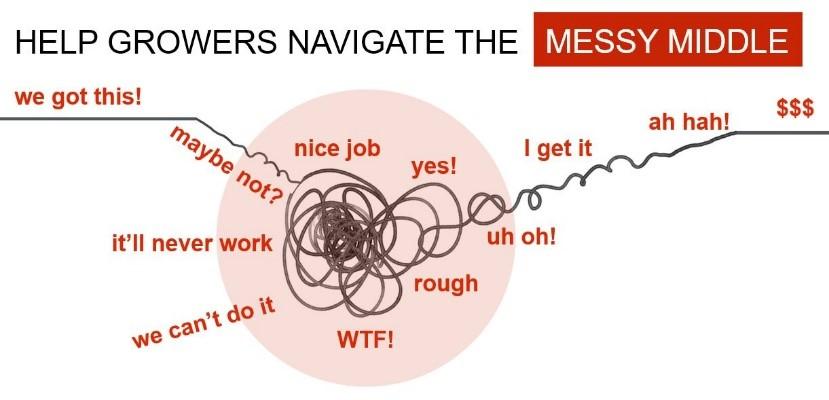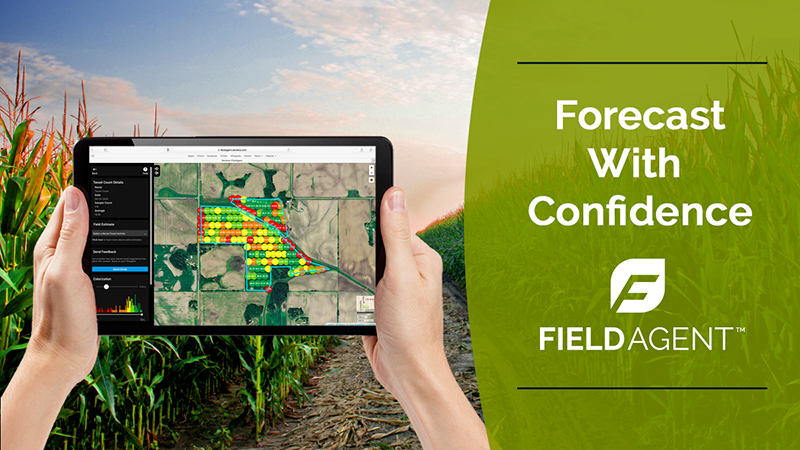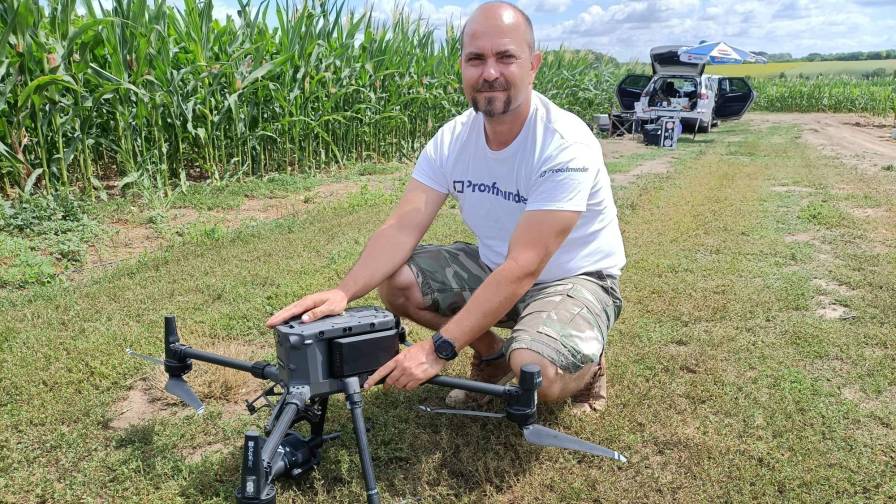Four Important Ways YOU Can Be the Grower’s Sherpa to Ag Technology
It can be easy to deride growers for not adopting technology faster than they are. From robotics to sensors to variable-rate application of crop inputs and on and on, the wonders of today’s technology for agriculture positively abound. So why can’t farmers just SEE the inherent value of all this technology to their operations?

Among the greatest value you as an advisor can offer your grower customers is helping them navigate that messy middle between the start of a new technological journey and the beginning of a payback.
Consider the view from their boots. It’s not just about your cool new solution. It’s about how your solution fits into a bigger picture – a “system of systems.”
This happened to be the theme of this year’s PrecisionAg VISION Conference in Seattle, WA, where I was privileged to be the keynote presenter for the second consecutive year. This year there was much talk of how technologies are becoming more compatible with one another to create a more technologically seamless experience for growers. But growers still are asking questions like:
- What systems are relevant to my operation?
- How do I leverage predictive analytics?
- How do I turn data into insight that’s actionable?
- How will precision ag change my operation? My labor needs?
- I’m drinking from a fire hose – how do I meter all this data and technology so that I don’t drown?
These are technical questions, but underneath it all is a human question: Am I ready to change?
Change is a Choice, and YOU Must Be the Change
Here is the essence of the message I took to that august gathering of senior-level thought leaders from across the agricultural and food sectors.
Number one: Change is a choice. Fear may resent change. Denial may ignore change. Ignorance may deride change. Self-interest may distort change. But in the world of precision ag, change is inevitable. What you do with it, whether you grow from it, is your choice.
Number two: YOU as a technology provider and a trusted advisor are in the best position to help farmers make that change. Regardless of where you are on the precision ag continuum, you must learn how to think about change in order to help your growers adopt and adapt. If you want growers to adopt your technology, you must position yourself as a thought leader who understands digital trends and how they intersect, then put those trends into context that your customers can understand. You must become a trusted advisor who can make the complex simple and elegant, then help the grower decide what to do. And, you must be a guru of change – a sherpa – who can help growers navigate the challenges of doing it.
Four Steps to Sherpa Status
What would being a sherpa of technological change look like? Here are four important steps.
1. Elevate the conversation to outcomes. As a technology provider you’re probably comfortable talking about features and functions of new technology. But growers are interested in outcomes: how technology will help me reduce input costs; increase yield and safety; operate in compliance with heightening demands for transparency, traceability, and sustainability.
Example: Growers are using only approximately 30% of the factory-installed technology on their John Deere equipment. So Owen Palm, President/CEO at 21st Century Equipment, a John Deere dealer in Nebraska, challenges his people to elevate the conversation from horsepower and torque to how precision ag is critical to the outcomes farmers are seeking.
2. Compete on relationship, not product/price. Price is a race . . . to the bottom. And products, while exciting, eventually can be replicated or even replaced by new technology or competition. It goes without saying that farmers are individual human beings, meaning one size fits one. You need to know the grower – whether s/he is a mom-and-pop grower or a corporate grower – so well that the conversation about your tech or data being relevant to their operation earns you a seat the table of strategic decision making. You can’t pitch everyone the same way. You need to be agile and adapt to a wide array of the signals the grower is sending you. You must be deeply in tune with their pain and pressure points and what makes them unique.
Another example: Ritz-Carlton has more than 2 million guest preference profiles in their system. They know their customers are saying: Know my preferences. Know what’s unique to me, and you will build a trust relationship that makes me more open to trying something new. The same is true for growers.
3. Let growers coach you. If you are going to compete on relationship, you must be coachable. Empathy starts with putting growers in the conversation and making them part of the design process. This is how you elevate the relationship.
Here’s what you need to do to in order to be coachable: Don’t let success become the enemy. Be restlessly curious. Seek advice (and really care about the insight). Apply what you learn. In doing so, you’ll effectively navigate around the fault lines that open when seismic technological change makes the very earth shake. Think of the following companies: Kodak. Borders. Blackberry. Blockbuster Video. How closely were they listening to their customers when the fault lines of technological change opened up?
4. Help farmers navigate the “messy middle.” Adopting new technology does NOT follow a nice, neat, linear line from point A to point B. There is a messy middle that includes starts and false starts, limited resources, organizational politics, regulatory constraints, environmental impacts, and more.
Here’s what happens in the messy middle. First, we realize technology can and should bring new and better outcomes. Second, we realize we can’t do it or don’t do it as well as the way we’re doing it now. Growth demands change, change produces insecurity, and insecurity induces fear. Finally, we lean in, learn, fail, and get better at it. But it’s the second step that screws with us. No one likes to feel incompetent, so as a change guru, you must make the case that feeling uncomfortable won’t last forever.
Here’s how you help growers make it through the messy middle:
Know your cause. We’re leveraging technology to build a food production system that will be sustainable for decades to come. That’s important!
Commit to being relevant. Why did 170-year-old John Deere buy upstart Blue River Technology and its technology and talent for $300 million? To stay relevant.
Conduct an audit. Take stock of successes and progress along the way. Send reassurances that as growers – who already are partners with fickle Mother Nature – they’ve shown a tremendous propensity to change and adapt. They’ve done it. They can do it again.
Dispel the “forever myth.” Often, we mistake temporary hardship and a sense of clumsiness as we try a new approach for something permanent. Don’t let the feeling that “this could last forever” stand in the way of change and adoption. Feeling incompetent doesn’t last forever.
Finally – be willing to suffer. Nearly all worthwhile change starts with discomfort, but in time nearly all of us will and do become better and more comfortable with technology. As the farmer’s technological guru, your value comes in helping growers anticipate and walk through the messy middle, not by promising them it will be easy.
Your technology may be whiz-bang cool, and I applaud you for advancing the field of precision ag. But your growers need to know how your solution interacts with six, eight, or 10 other whiz-bang cool solutions. Equally important, they’re looking for a guide they can trust. Someone who sees the bigger picture and can help them leverage multiple technologies to grow their businesses.










